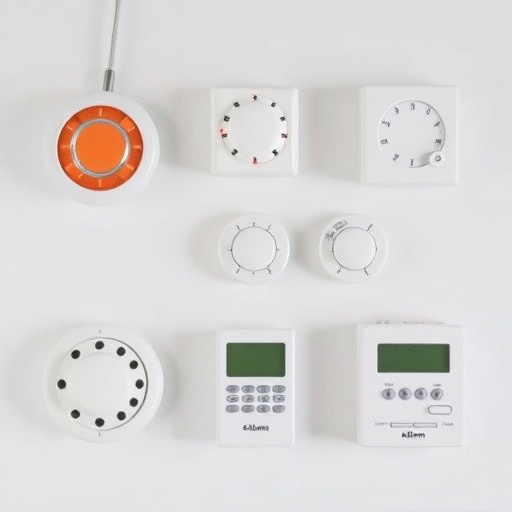Personal alarms with volume adjustment features offer customizable distress signals, crucial for safety in diverse environments. These devices allow users to set volumes based on location and noise levels, ensuring alerts are heard clearly without false triggers. In today's digital era, this technology enhances personal security, catering to individual needs from public deterrence to subtle notifications in private settings.
Personal distress signals, now often equipped with tracking technology, have emerged as powerful tools for safety. In today’s world, understanding and recognizing these signals is crucial for self-protection. This article delves into the significance of personal distress signals, exploring their various components, including advanced tracking capabilities and essential volume adjustment features. We’ll discuss how these innovations enhance response times and offer a holistic approach to personal safety through integrated alarm systems.
- Understanding Personal Distress Signals: The Essential Tools for Safety
- Tracking Technology: Enhancing the Reach and Impact of Distress Signals
- Volume Adjustment Features: Customizing Alerts for Optimal Response
- Integrating Personal Alarm Systems: A Holistic Approach to Self-Protection
Understanding Personal Distress Signals: The Essential Tools for Safety
Personal distress signals, often in the form of portable devices, are essential tools for safety and peace of mind. These devices are designed to provide individuals with a means to quickly and discretely alert others when they perceive a threat or find themselves in a dangerous situation. Understanding personal distress signals is crucial, as it empowers people to take control of their safety.
Features such as adjustable volume settings play a vital role in ensuring that these signals can be heard above ambient noise during times of crisis. This allows users to customize the alert level according to their preferences and surroundings. With just a simple press or activation, these devices emit loud and distinct tones, signals, or messages, drawing attention and alerting nearby friends, family, or emergency services.
Tracking Technology: Enhancing the Reach and Impact of Distress Signals
In today’s digital era, tracking technology has revolutionized personal safety measures, significantly enhancing the reach and impact of distress signals. Devices equipped with GPS and advanced communication systems enable users to transmit their location and distress calls promptly, ensuring swift response times from emergency services. This integration of technology into personal safety is a game-changer, especially in remote or challenging terrains where traditional methods may struggle.
Personal alarm devices now boast innovative features like volume adjustment, allowing users to customize the alert sound to suit their environment. Higher volumes can pierce through noise-heavy areas, ensuring their distress signals are heard. This adaptability is crucial when considering various scenarios and settings where individuals might find themselves in need of assistance.
Volume Adjustment Features: Customizing Alerts for Optimal Response
Personal Alarm devices, with their Volume Adjustment Features, offer a customizable approach to personal distress signals, ensuring individuals receive alerts at a level that is both noticeable and manageable. This feature allows users to set the alarm volume according to their preferences and environmental context, promoting optimal response times during emergencies. By adjusting the volume, users can tailor the device to their specific needs, whether it’s a subtle notification for certain situations or a loud, piercing sound for more urgent cases.
Customizing alerts is particularly beneficial for individuals with varying sensitivity to sounds or those in environments where background noise levels fluctuate. For instance, someone working in a quiet office might opt for a lower volume setting, while a person in a noisy construction site could maximize the alarm’s intensity. This flexibility enhances the effectiveness of personal distress signals, encouraging prompt action when needed and minimizing false alarms.
Integrating Personal Alarm Systems: A Holistic Approach to Self-Protection
In today’s digital era, personal safety has become a paramount concern for many individuals. Integrating personal alarm systems into one’s self-protection strategy is a holistic approach that leverages technology to enhance security. These devices go beyond simple loud noises; they offer advanced features such as adjustable volume settings, ensuring the alarm can be heard effectively without causing unnecessary disturbance. This customization allows users to tailor their protection according to their environment and comfort levels.
By incorporating personal alarms with volume adjustment capabilities, individuals can create a comprehensive safety net. In public spaces or while traveling alone, a loud, attention-grabbing alarm signal can deter potential threats. Conversely, in more intimate settings, a subtle yet noticeable alert can be triggered without upsetting neighbors or disrupting daily routines. This versatility makes personal alarm systems a versatile tool for self-defense and peace of mind.
Personal distress signals, equipped with tracking technology and volume adjustment features, offer a powerful tool for personal safety. By integrating these systems into our lives, we can enhance our ability to communicate in emergencies and ensure faster response times. The customizability of alerts through volume adjustments ensures that the right people are notified without causing undue alarm. Integrating such personal alarm systems holistically improves self-protection, giving individuals peace of mind and greater control over their safety.
